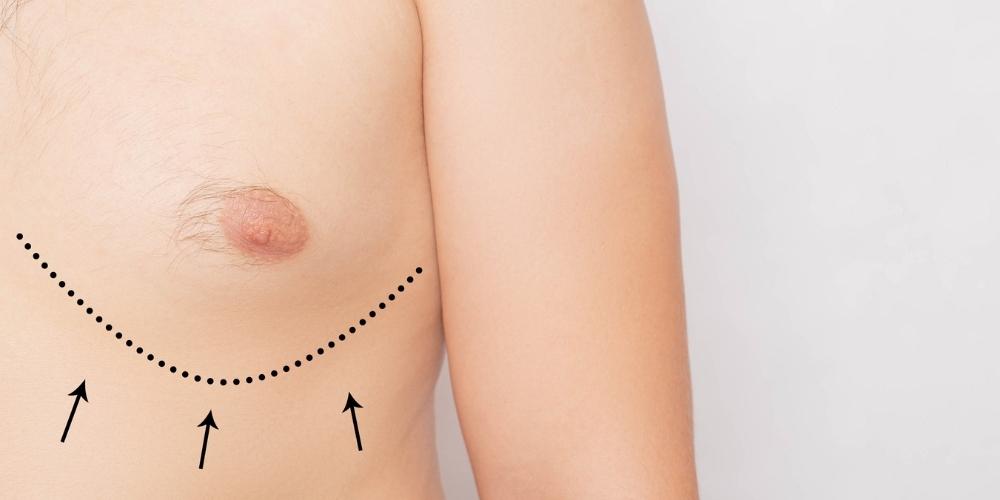Things To Know About Gynecomastia Surgery


Gynecomastia, commonly known as male breast enlargement, is medically defined as the growth of tissue in the breasts as a result of an imbalance in the hormones responsible for milk production, testosterone and estrogen. This hormonal imbalance usually occurs when the level of testosterone in the body decreases and the hormone estrogen increases. These hormonal changes are more common during puberty and in men over the age of 50. While it may occur temporarily during puberty due to hormonal fluctuations, it is more likely to become permanent in old age. This condition becomes evident in the form of mass, sagging, cracking and swelling in the male breast area. Gynecomastia can be psychologically disturbing as well as affecting the physical appearance of the individual. It can have negative effects on body image and self-confidence, especially among young men. Therefore, it is important for individuals who encounter this condition to seek appropriate medical assistance and begin the necessary treatment process.
Yes, there are different types of gynecomastia and they are mainly classified according to the causes of their occurrence and the types of tissue that occur in the chest. These types include glandular gynecomastia, mixed gynecomastia and fatty gynecomastia.
Each type of gynecomastia is characterized by different symptoms and treatment methods. Therefore, it is important to consult a qualified health professional for an accurate diagnosis and determination of the appropriate treatment method.

Gynecomastia can occur under the influence of many different factors that cause breast enlargement in men. These factors are often associated with hormonal imbalances in the body and various health conditions. Here are some of the main factors that can cause gynecomastia:
Before gynecomastia surgery, there are several important points to be considered for the success of the operation and the health of the patient. Paying attention to these issues both ensures that the operation process goes smoothly and accelerates the healing process. Here are the important points to be considered before gynecomastia surgery:
Paying attention to these precautions before surgery ensures that the surgical procedure is performed more safely and effectively. Following these recommendations not only increases the success of the surgery, but also helps the recovery process to be faster and smoother.
Gynecomastia surgery prices in Turkey may vary depending on various factors. Factors such as the city where the hospital or clinic where the surgery will be performed, the quality of the services offered by the hospital and the experience of the doctor are factors that directly affect the cost. In addition, the scope of the surgery and the techniques to be applied may also cause price differences. Details such as the type of anesthesia to be used in gynecomastia surgery, the duration of the surgery and the care the patient will need after surgery also play an important role in determining the total cost. Since Turkey is a popular destination for health tourism, many hospitals and clinics offer gynecomastia surgeries at international standards. This provides access to quality healthcare services for local and foreign patients. However, before deciding to undergo surgery, it is important to conduct a thorough research, get price quotes from different health institutions and meet with doctors one-on-one. In this way, it will be possible to get both affordable and reliable healthcare.
Breast enlargement in men usually occurs at the beginning of puberty. In order for the surgery to be performed, the body must have completed its development and therefore the patient must be at least 18 years old. For men over 50 years of age, gynecomastia surgery can be performed if the patient's health allows it.
No matter which technique is used, it is impossible for the breast to grow again as the tissue that causes male breast augmentation is removed.
Wound healing varies according to the patient's skin structure and lifestyle. Scars usually disappear within 3-6 months.
The excess breast tissue is removed through a crescent-shaped incision near the nipple. Normally, 7-10 days is enough to recover and return to normal life after gynecomastia surgery. The patient should rest for the first 3 days after the procedure. Within 7-10 days, bruises and edema disappear and the wounds close. It may take 3-6 months for the skin to heal completely, return to its normal shape and the numbness in the breasts to decrease.
Since gynecomastia is performed under general or local anesthesia, there is no pain during the operation. Mild pain after the procedure can be relieved with painkillers prescribed by the doctor. This mild pain may last 7-10 days. Although it varies from patient to patient, most of them report no pain.
The patient should not be exposed to the sun for 3 months after gynecomastia. After operations performed in summer, sunscreen with high sun protection factor should be used. Carelessness in this regard may cause dark scars to remain behind.
The average recovery time from gynecomastia is 7-10 days. However, arm movements should be restricted and in case of strenuous work, the rest period should be extended in consultation with the doctor.
It is mandatory to wear a corset for 4 weeks after surgery. After these 4 weeks, it is recommended that you continue to wear the corset during the day to speed up the healing process.